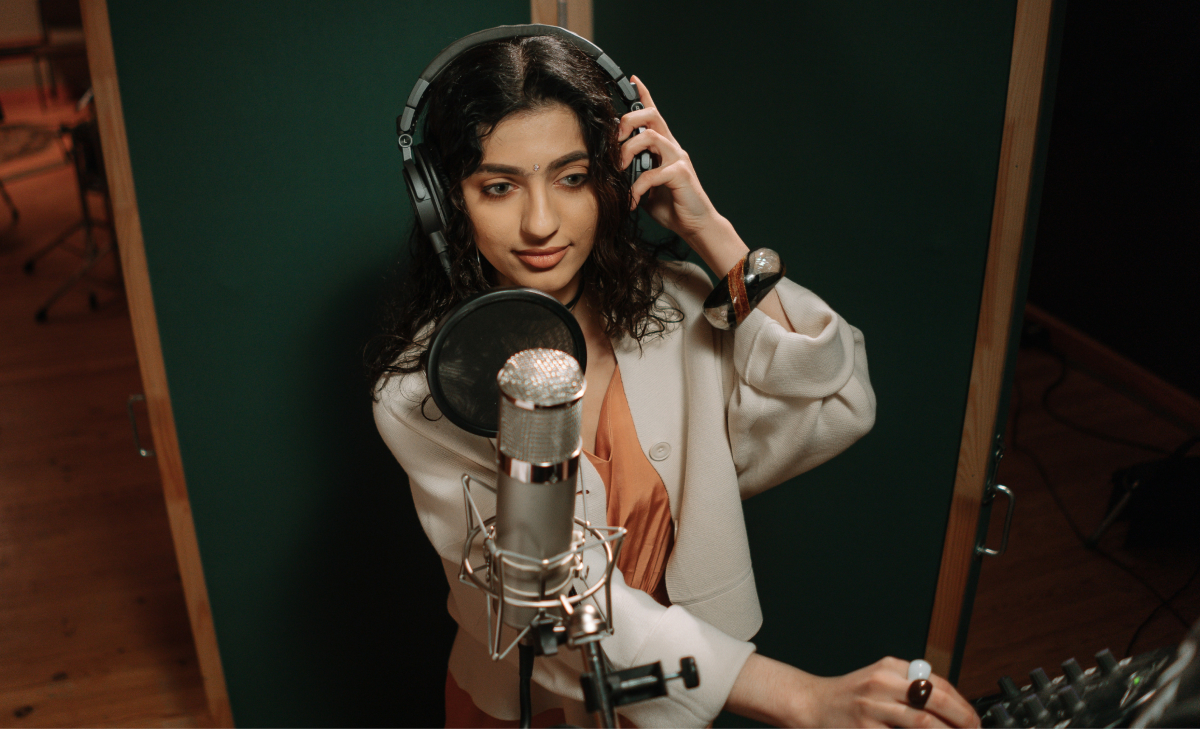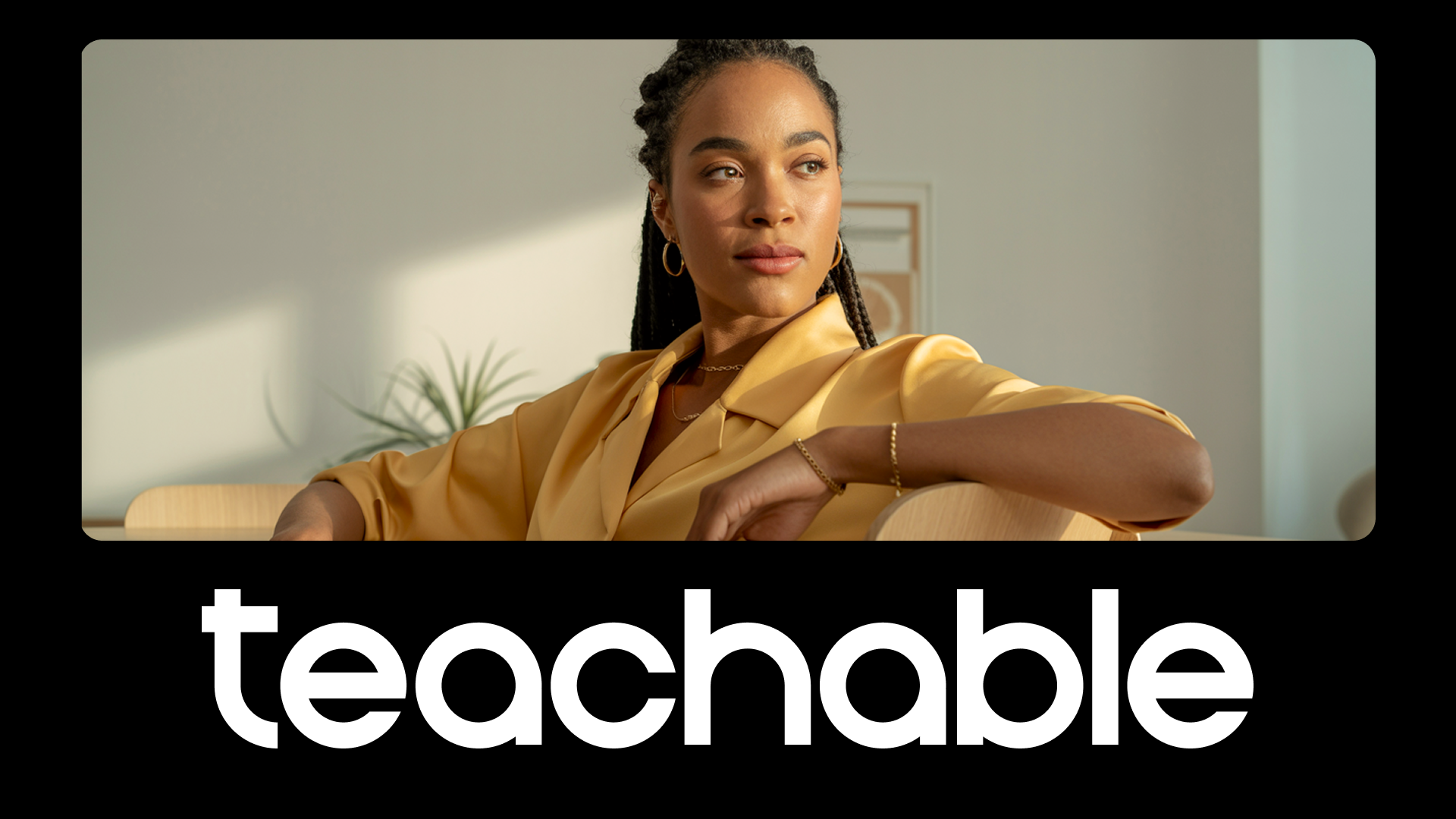While videos have always been a big part of online learning, there’s a growing interest in audio courses. Think about it: we’ve always loved to listen, from ancient stories told around a fire to today’s popular podcasts.
Many people find audio a welcome change. Audio lets you learn without staring at a screen or a page, and you can listen while doing other things. In fact, data shows that about 74% of people who consume audio content do so during their daily rituals.
In this article, we’ll see why audio courses are catching on and why they might be a great fit for your learners at Teachable.
Ready to listen in?
The science behind auditory learning
Our brains are pretty amazing at processing sounds. When we hear something, our brain works to understand it and store it. This is why we can remember songs we like or the voice of a friend.
In a recent study, it’s been proven that spatial audio can have benefits for clinical and medical settings. So for many, hearing information can make learning feel more natural and enjoyable. Here are some reasons why:
- Memory boost. When we listen, we use our memory to understand and store information. Hearing things can make them stick in our minds better than text, especially when it’s something we’re interested in.
- Focus and attention. Listening can help us pay attention. When there’s no video or text, our brains can focus more on the words we’re hearing. It’s like tuning into a radio show; you listen closely to visualize and understand the story.
- Convenience. You can listen while doing other things, like walking or cooking. This means you can learn new stuff without having to stop your day-to-day activities.

Crafting compelling audio-only courses on Teachable
Creating a captivating audio-only course is both an art and a science. With the right approach, you can deliver a rich learning experience that resonates with your audience.
At Teachable, we provide you with tools, features, and the best support to help harness audio to create courses that resonate well with your learners. Here’s a guide to crafting compelling audio-driven courses on this platform.
Scripting
Crafting scripts for audio requires a focus on clarity and engagement. Every word must serve a purpose, avoiding unnecessary jargon and complexity. A friendly, conversational tone can make content more relatable and enjoyable, fostering a connection between you and the learner.
Sound design
Clear, high-quality audio is non-negotiable. It reduces distractions and ensures that the content is accessible and enjoyable. You can also use background music and sound effects in moderate amounts to enhance the learning experience by creating an immersive atmosphere.
Interactivity
Incorporate quizzes, reflections, and prompts to keep learners active and engaged. This helps reinforce learning outcomes. Providing opportunities for learners to give feedback or ask questions can create a two-way interaction, enhancing the learning experience.
Leverage Teachable’s features
At Teachable, we’ve designed a suite of features to empower course creators like you, especially when crafting audio-only courses. For instance, Teachable seamlessly integrates with various podcast platforms and audio hosting sites. This means you can effortlessly expand your reach and tap into a wider audience without the technical hassle.
Our analytics platform also helps you to understand your learners’ behavior and preferences. With this data, you can refine your courses, ensuring they resonate even more with your audience.
Advantages of audio-driven courses
Audio-driven courses are gaining traction in the e-learning world and it’s mainly due to:
- Accessibility. Audio courses cater to those with visual impairments, making e-learning more inclusive. Plus, they only require basic tech, like a device that plays audio.
- Convenience. Audio courses allow learners to learn while commuting, exercising, or doing chores. It’s a chance to gain knowledge without being tied to a screen.
- Cost-effectiveness. Producing audio content can be more budget-friendly than video, eliminating the need for cameras or complex setups. Updates or edits can also be more straightforward.
- Flexibility. Audio segments can be short and easy to consume during brief breaks. The ease of replaying or pausing ensures learners can review content at their own pace.

Who benefits most from audio-driven courses?
Audio courses are known for being more inclusive than other types of learning, and they’re ideal for:
- Busy professionals. For those juggling tight schedules, audio courses allow learning during commutes, lunch breaks, or even while multitasking at work. It’s a way to upskill without needing extra hours in the day.
- Auditory learners. Some people retain information better when they hear it. For these auditory learners, audio courses align perfectly with their natural learning style, making comprehension and retention easier.
- People with visual impairments. Audio courses provide an accessible learning format for those who might struggle with text or video content. It ensures everyone has an equal opportunity to learn.
- Commuters. Whether on a train, bus, or plane, travelers can turn transit time into productive learning sessions. No need to watch a screen; just plug in and enjoy the scenery.
Ideal topics for audio-driven courses
When considering the shift to audio-driven courses, it’s essential to recognize that while many topics can be adapted to an auditory format, some naturally lend themselves to this medium, such as health and wellness.
These subjects often rely on storytelling, narration, or verbal explanation rather than visual aids. Aside from health and general education for young learners, these topics are also tailor-made for audio courses:
- Language learning
- History
- Business and leadership
- Music and music theory
- Digital marketing
How Teachable supports audio-driven courses
Here’s how Teachable is making it easier for creators to offer compelling audio courses:
User-friendly interface
Teachable allows for straightforward uploading of audio files, making it easy for course creators to add and organize their content. If you have a series of audio lectures, you can effortlessly upload them in sequence, ensuring a smooth learning flow for your students.
Easy integration
Our platform integrates seamlessly with popular podcast and audio-hosting sites. For instance, if you’ve already hosted content on platforms like SoundCloud or Podbean, you can effortlessly link or embed them into your Teachable course. Or if you want to directly target your listeners, you can integrate your course with ConvertKit and streamline the process.
Analytics and feedback
Teachable offers insights into how students are engaging with your audio content. You can gauge which parts of your course are most popular, helping you tailor your content to what truly resonates with your audience.
Community building tools
Likewise, Teachable provides tools that encourage interaction among your students. You can establish forums or Q&A sections, allowing your students to discuss content, exchange insights, or pose questions.

Challenges and obstacles of audio-driven courses as an educational tool
Despite Teachable’s array of features for audio course creators, you must still come with the fact that such a learning experience isn’t for everyone. It’s mainly due to the following reasons:
Lack of visual aids
Some topics are best understood with visuals. Without charts or diagrams, certain concepts can be hard to grasp. This is especially true for younger learners, who need engagement in order to understand that it’s time to learn.
A good way to offset this would be to allow kids to consume educational content while enjoying outdoor activities, just like how we listen to podcasts while jogging.
This has an effect similar to microlearning—the lessons can be bite-sized, the learner will associate the activity with something positive, and the whole experience will be healthy, both mentally and physically.
Some people just don’t like it
Not all learners are auditory. Some people retain information better with visuals or hands-on experiences. To cater to diverse learners, offering a blended learning approach with both audio and visual materials can be beneficial.
Complexity in content delivery
Explaining intricate concepts or processes can be challenging without visual aids. A solution is to break down complex topics into smaller, digestible segments and use descriptive language to paint a vivid mental picture for the listener.
Conclusion
Audio courses, with their unique blend of convenience and intimacy, offer a fresh avenue for learning.
At Teachable, we’ve always been at the forefront of e-learning, keenly observing and adapting to the ever-evolving needs of educators and learners alike. We understand the growing need for learning experiences that align with the fast-paced lives of our users.
Recognizing the shift towards more flexible and accessible learning mediums, we’ve adapted our platform. You should do so too, if you want to present your content in an engaging and easily digestible manner.
Join more than 150,000 creators who use Teachable to make a real impact and earn a real income.


.png)



.png)

